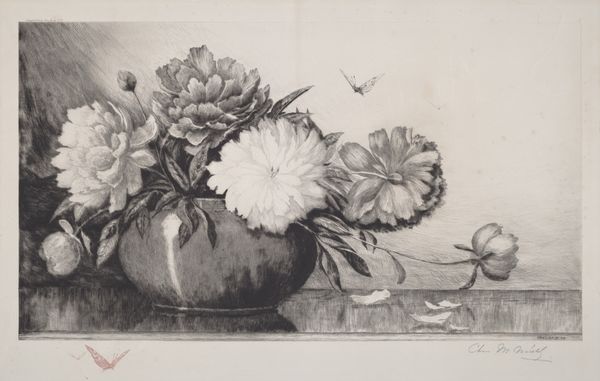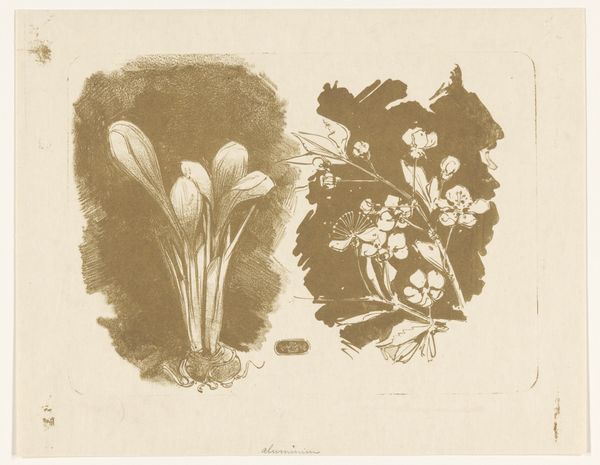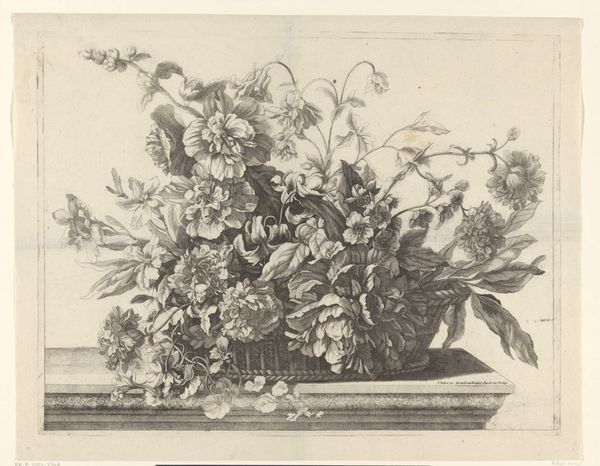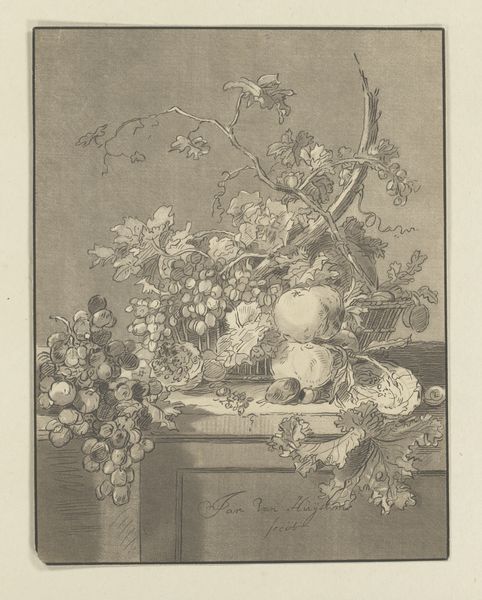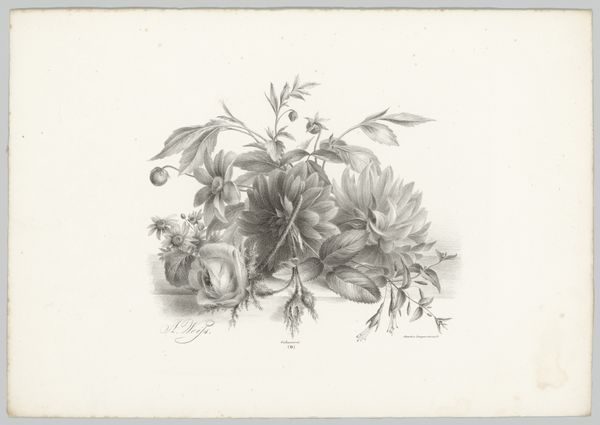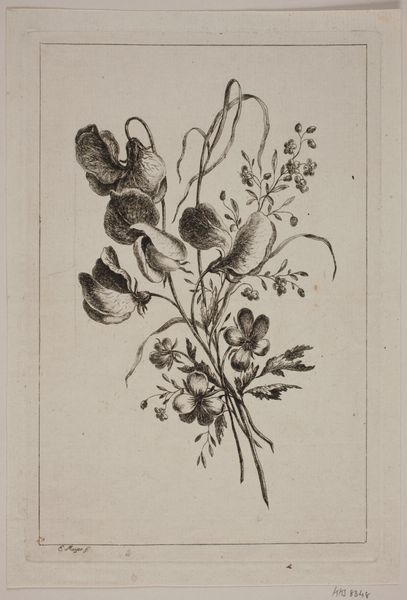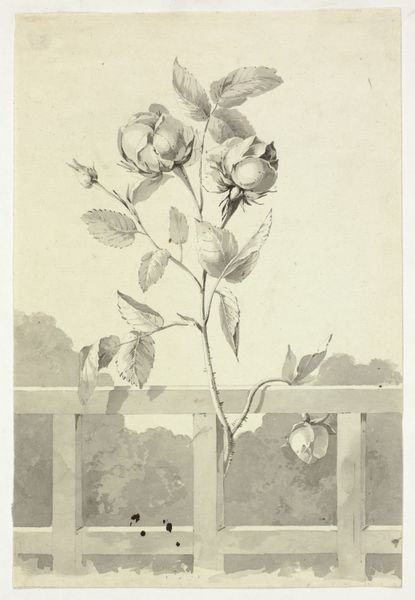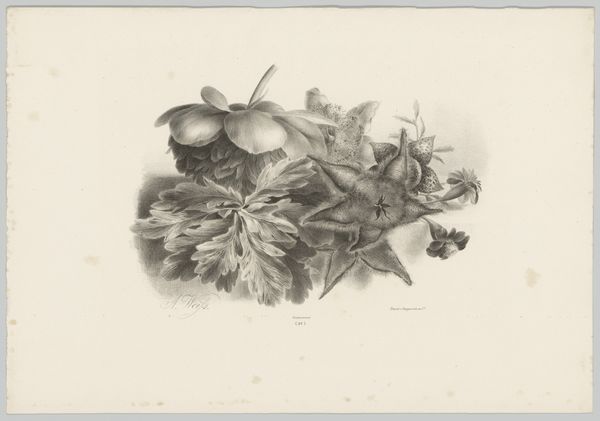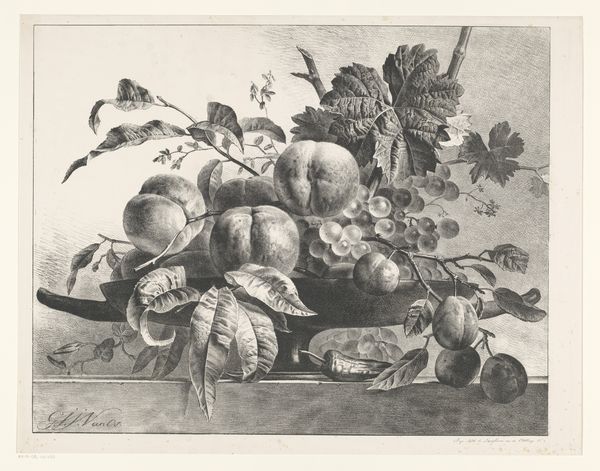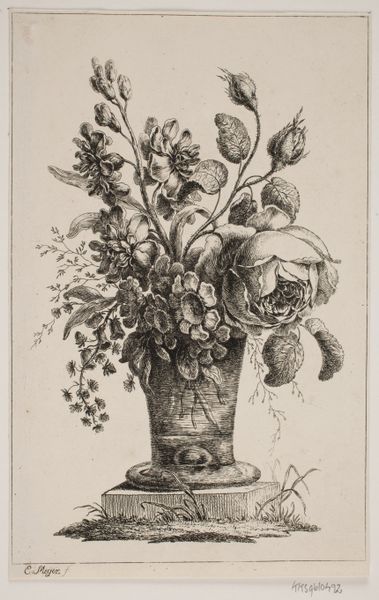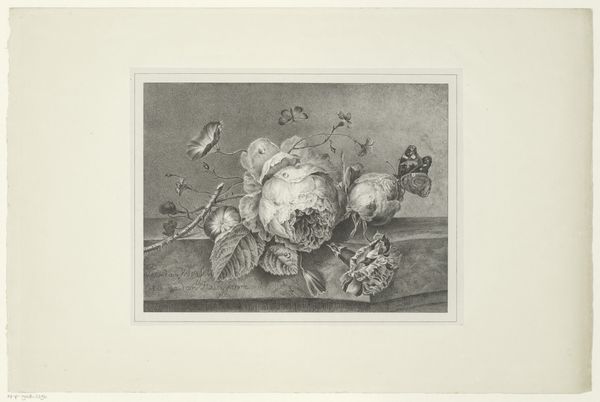
drawing, graphite
#
drawing
#
16_19th-century
#
line
#
graphite
#
realism
Dimensions: height 340 mm, width 443 mm
Copyright: Rijks Museum: Open Domain
Curator: Oh, there’s such an interesting stillness about this. A silent feast. Editor: That's a beautiful way to put it. We're looking at a graphite drawing titled "Stilleven met druiven en kastanjes," or Still Life with Grapes and Chestnuts. It was created sometime between 1809 and 1861 by Georgius Jacobus Johannes van Os, and it resides here at the Rijksmuseum. Curator: It does feel very of that time, doesn't it? Something almost meditative in the details. I'm really struck by the contrasts. The plump, almost luminous grapes versus the prickly, brown chestnuts. It’s autumn bottled in graphite. Editor: Absolutely. Those chestnuts with their spiky shells—archetypes of protection, wouldn't you agree? Against the sweetness, the yielding flesh of the grapes. I find the visual textures intriguing, like a secret code of protection versus vulnerability. The shadow seems so heavy somehow... Curator: It almost feels like the grapes are resisting the inevitable slide towards shadow and decay, you know? The artist manages to suggest all these states of being simultaneously with just line and shading. The one curling grape vine escaping the clusters adds a very dramatic tension and playfulness. I suppose if I'd found myself as a lone tendril I'd reach for the heavens as well. Editor: Perhaps that's the inherent visual tension? Light versus dark, sweet versus protective… or maybe Van Os captured his own duality through symbolic representation? Curator: And that heavy shadow... a reminder of what season follows. A real touch of melancholy, maybe a foreshadowing even. You look at those almost translucent grapes and then those sturdy chestnuts – preparing to withstand a cold season. Editor: Right! It suggests the turning of the year, this constant rhythm of life, death, and eventual rebirth—a visual poem about resilience itself, rendered in muted greys. So subtle. Curator: It’s making me consider, the piece really underscores, on just how something so simple, so seemingly straightforward can actually house this enormous well of reflection within its frame. Editor: And that, perhaps, is the magic—a testament to how visual artists have given weight to form, time and again through still lives for generations.
Comments
No comments
Be the first to comment and join the conversation on the ultimate creative platform.
